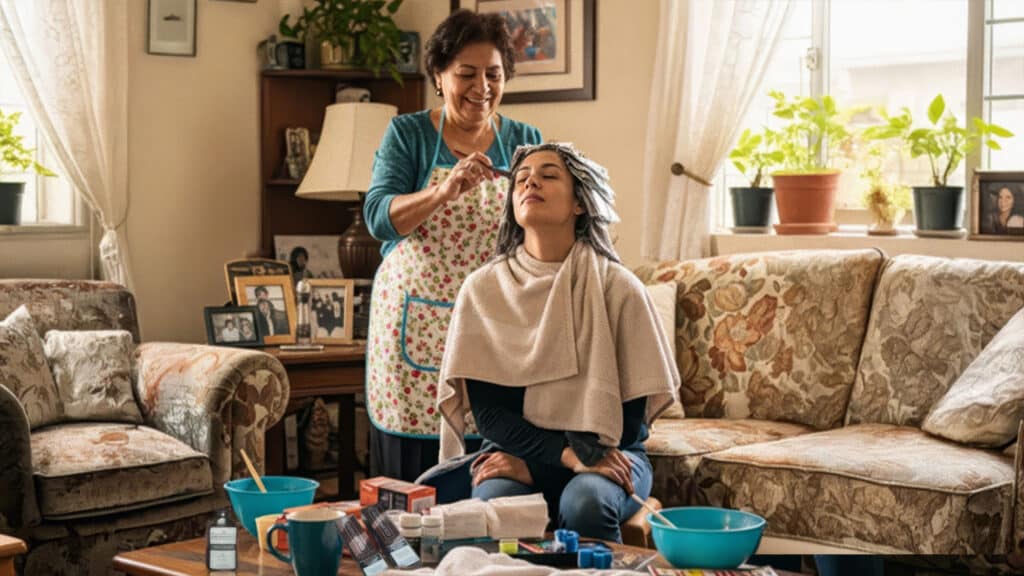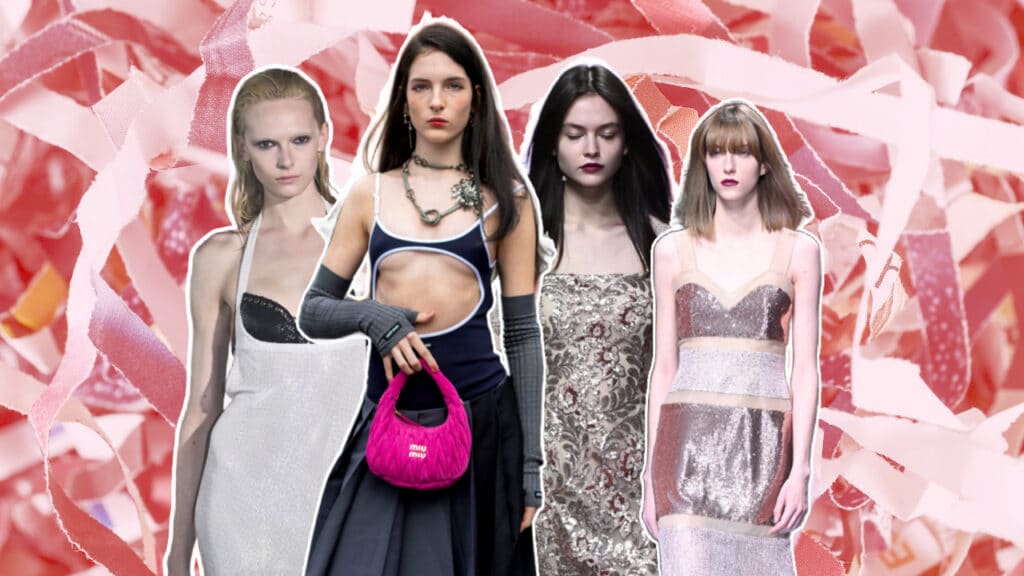Fashion’s Power Players Are Mostly Men. These Women Are Flipping the Script
In 2025, much of the conversation around fashion has focused on the industry’s gender gap. The recent shuffling of creative directors at major fashion labels has shed light on the lack of women, especially women of color, leading fashion brands at the top level.
Despite being an industry that caters to women and heavily relies on their workforce, fashion’s boardrooms and C-suites are still male-dominated. As per a report published in 2018 by McKinsey & Company, “fewer than 50 percent of well-known womenswear brands are designed by women.”
The scene has remained more or less unchanged since 2018. Some experts even claim that female representation in creative director positions has declined in the last 15 years. Prominent women in fashion, such as Donatella Versace, former Versace creative director, and Maria Grazia Chiuri, Dior’s first-ever woman artistic director, have stepped down from their roles and are, or are at least rumored to be, soon replaced by male white designers.
Fashion insiders also point out that the largest fashion conglomerates continue reinforcing male designers’ status quo. At Kering, the world’s second-largest fashion conglomerate, all fashion houses are helmed by white males. Meanwhile, LVMH, the biggest luxury conglomerate, has only four women in creative direction positions in its fashion and leather goods division. For context, LVMH is home to more than 75 maisons, including 16 fashion brands.
The data is even more telling if you know that over “85% of graduating majors from top fashion schools are female” yet “only one in six individuals employed by the fashion industry globally identifies as female.”

The traditional fashion model is still patriarchal
The same male-dominated structure prevails at the executive level of fashion houses. In addition to acting as creatives, men are responsible for financial and operational decisions. Women, on the other hand, are relegated to backup positions. And even if they land leading roles, they still need to prove themselves in ways their male counterparts aren’t required to. Women also face exponential scrutiny, criticism, and nitpicking.
For instance, Maria Grazia Chiuri, Dior’s exiting creative director, and Virginie Viard, former artistic director at Chanel, faced constant critique for their designs. The media and online spaces regarded as fashion authorities often reduced their criticism to the designers’ runways. However, many of the hateful comments against their work failed to recognize that during their tenures, product sales and revenues grew significantly for Dior and Chanel, respectively. In Chiuri’s case, her support for female artists, young women in fashion and underrepresented voices in the arts, through funding and special projects, was vastly overlooked, misrepresented, or even criticized without a solid basis.
The visceral sentiment that Chuiri and Viard’s designs sparked was nowhere comparable to the reactions that many controversial male designers, even those involved in misconduct and assault allegations, ignite with their work.
But women are still finding their voice and changing narratives
Although corporate fashion doesn’t seem to be the most career-friendly space for women, that doesn’t mean they’re not contributing to the industry’s growth. Though women in fashion face challenges like pay gaps, gender biases and lack of funding, the good news is that they’re finding ways to reshape narratives, champion changes, and innovate.
Earlier this year, the data account Data But Make It Fashion reported that although men create the vast majority of fashion at big labels, womenswear collections designed by women were on average 51% more popular at the most recent Paris Fashion Week edition.
Women are also leading transformation in the fashion landscape with their creativity. Several women founders and fashion industry professionals worldwide are embracing innovation and pioneering structural changes. Their commitment to uplifting female voices, championing size inclusivity, environmentally friendly practices, and all-women spaces hasn’t gone unnoticed.
With their vision, various women, particularly Latinas, are elevating fashion, building meaningful projects, and proving that women belong in fashion.
All-women ateliers
In Colombia, for example, Tikuna Jewelry, led by designer Patricia Acosta, transforms Colombia’s cultural heritage and emerald tradition into jewelry.
The brand, founded in 2003, is an all-female business. Acosta works with a small group of women master artisans: Rosita, Mile, Carolina, and Eli, who handcraft each piece. Keeping tradition alive and distancing themselves from mass and industrial production, the jewellers create pieces well-loved by celebrities like Karol G.
“For us, jewelry isn’t just an ornament: it’s a language,” the brand tells FIERCE. “The pieces are a bridge between tradition and modernity, between the land and the person who wears it.”

Amplifying Latina voices and representation
Ecuadorian-Colombian publicist Sofia Bibliowicz built SOFIA BIB PR on the belief that every brand, artist, and founder deserves to share their story in a way that feels genuine to them. The public relations agency has worked with creatives worldwide, uplifting emerging talent in various industries, including fashion, beauty, art, and lifestyle.
However, elevating Latin voices has been one of Bibliowicz’s driving forces. “Being born in Ecuador with roots in Colombia, I’ve felt the importance of representation firsthand,” she tells FIERCE. “It has always been a passion of mine to work with Latin-owned businesses and creatives whose work I see myself in — those who challenge, inspire, and create meaningful change.”
As she continues to work with inspiring women and purpose-driven brands, Bibliowicz hopes to serve as a bridge for people in the industry. “My goal is not only to elevate these stories,” she says. “But to create a space where other Latin American creatives feel seen, supported, and encouraged to follow their dreams.”

Safeguarding traditional knowledge and heritage
Hailing from Zinacantán, Chiapas, Margarita López is a master artisan and co-founder of the artisan project Kip Tik. Through this initiative, which brings together indigenous women from communities in Chiapas, Puebla, and Guanajuato, López seeks to promote fair trade, safeguard artisanal design, and boost economic development for women.
“My inspiration for launching a Mexican artisanal design brand is to preserve and pass on [traditional] knowledge and techniques to younger generations,” she tells FIERCE. “In this way, I promote and safeguard not only the legacy, but also the memory of my mother and grandmothers.”
Lopéz, alongside other artisans from the collective Nudo 6/6, showcased their work at Vancouver Fashion Week in April. “It brought me great joy and excitement, but also nerves to attend and participate in this runway show,” López shared. “We brought the voice and knowledge of our fellow artisans so that people around the world can learn about what we do and produce. This helps us to continue preserving our techniques and knowledge.”

Championing eco-fashion
Lima-based designer Mozhdeh Matin mixes heritage and modernity in her namesake fashion label. The creative found inspiration for her brand when she embarked on a journey through Peru to learn about traditional crafts. Recognizing the importance of preserving traditional techniques, Matin worked with local artisans to create natural materials and launched Mozhdeh Matin in 2008.
Her work now honors Peruvian craftsmanship and textile tradition without neglecting sustainability. Matin collaborates with ECOMUSA, a communal enterprise that produces Shiringa bio-leather through artisanal processes in small batches to ensure sustainability.

Shedding Light on Indigenous Craftsmanship
Creating traditional clothing often involves the highest level of craftsmanship, skill, time investment, and high-quality materials. Haute Coutureshina, a 7-part video series, sheds light on the complex design techniques behind the traditional garments of the Kichwa peoples of Ecuador.
Produced by sisters Citlalli and Tamia Andrango, the visual project takes viewers through the techniques and craft of Indigenous people in the Ecuadorian Andean region. Reflecting the richness of their cultural expressions, the videos highlight Indigenous savoir-faire, from weaving and embroidery to spinning and dyeing. The video clips offer insight into the processes and significance of clothing in Kichwa people’s wardrobes.
“While people are curious about how much traditional clothing costs, for us, the value of Kichwa clothing has to do with the textile traditions, the artisans, and the time these people invest in making the garments,” Tamia Andrango tells FIERCE. “We wanted to do something that would break stereotypes [about traditional clothing] and not talk about something as superficial as the price of the garments.”
Fashion meets technology
A pioneer in the convergence of fashion and technology, Elizabeth Salim founded SVLIM with fashion tech and sustainability as its foundations. The brand repurposes discarded textiles, upcycles material, and minimizes waste in all its processes. Employing tech and strategically located to reduce its carbon footprint, the brand approaches sustainability holistically.

“I’ve always believed that waste is a design flaw because, as creatives, we have an obligation to think about the entire lifecycle of products,” Salim states. In addition to her brand, Salim has stood out for her work fusing technology and textile innovation. She has collaborated with Intel, Continental, and even contributed to textile development for NASA.




